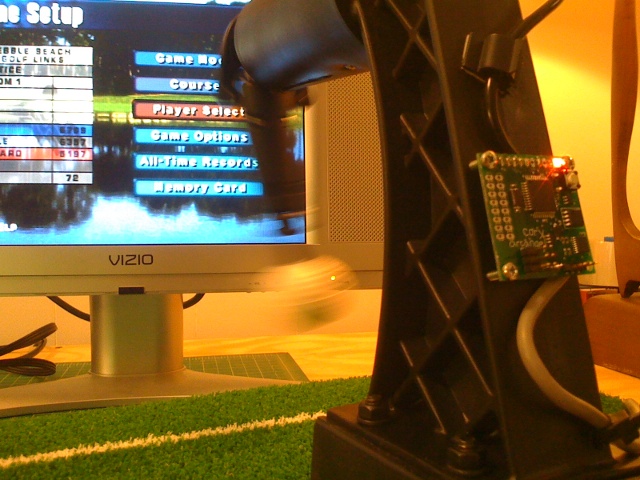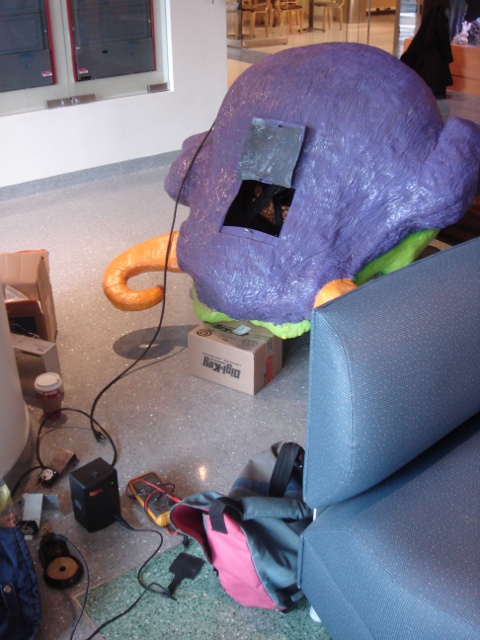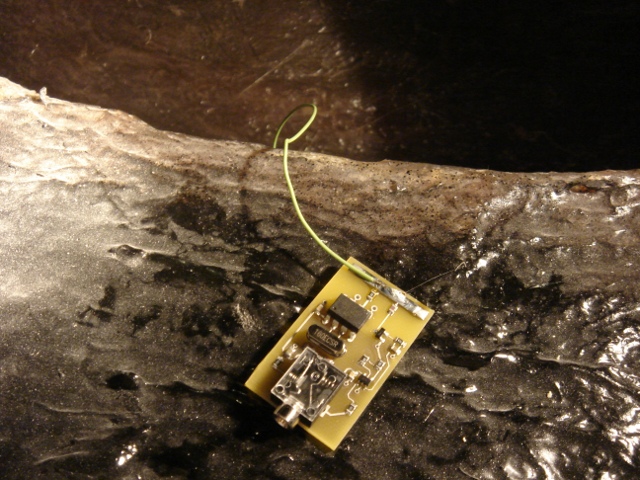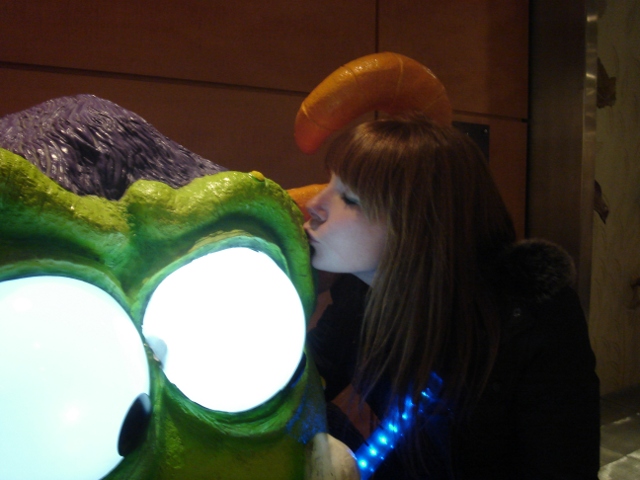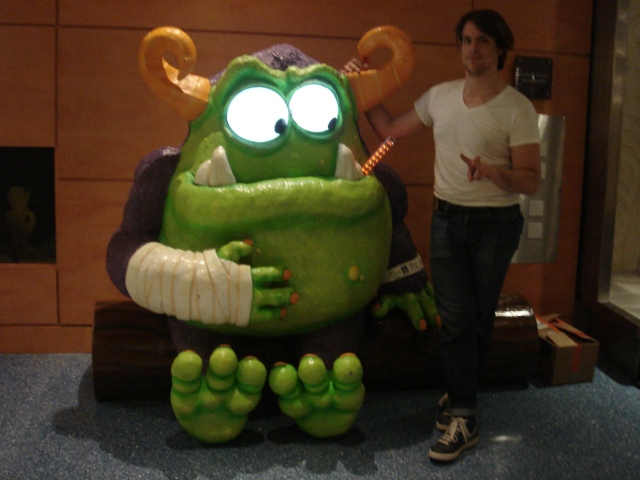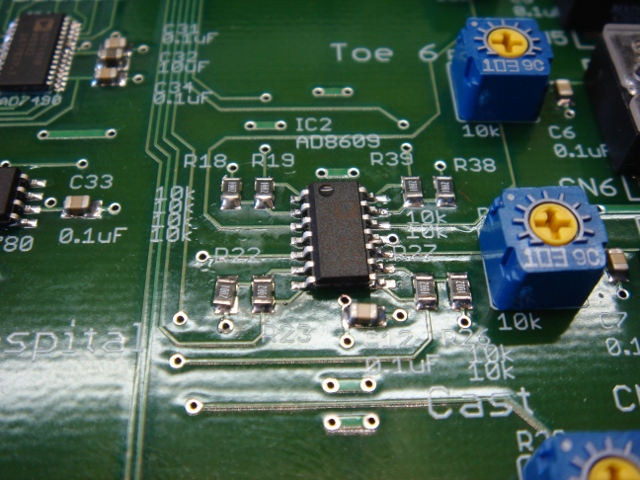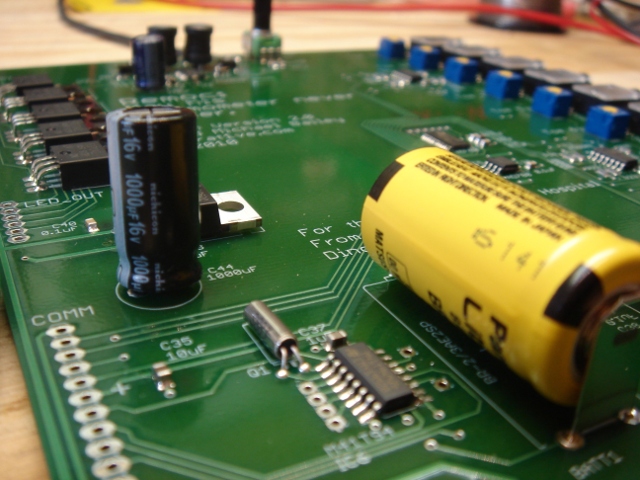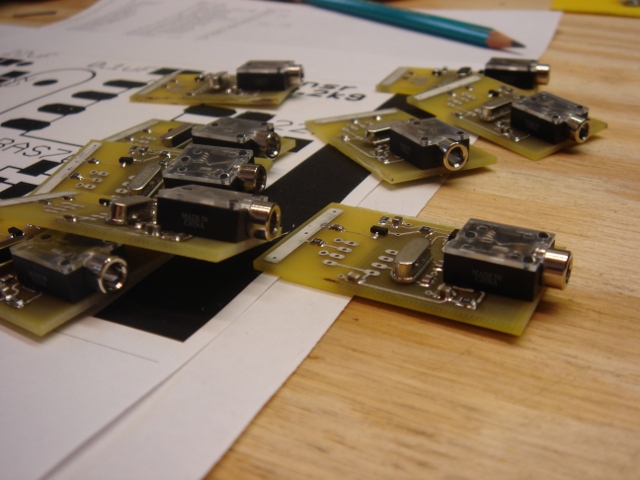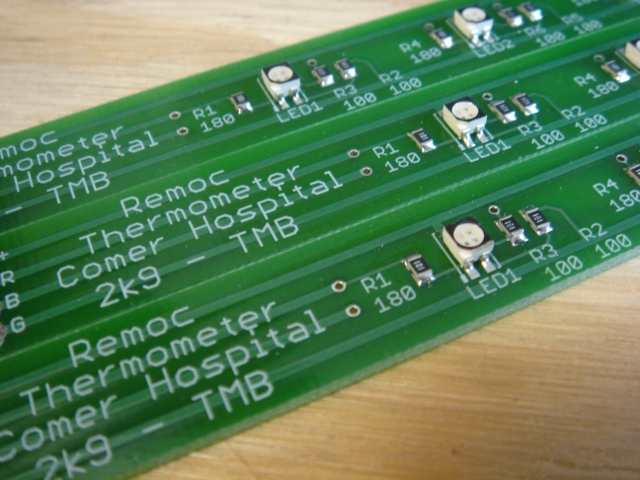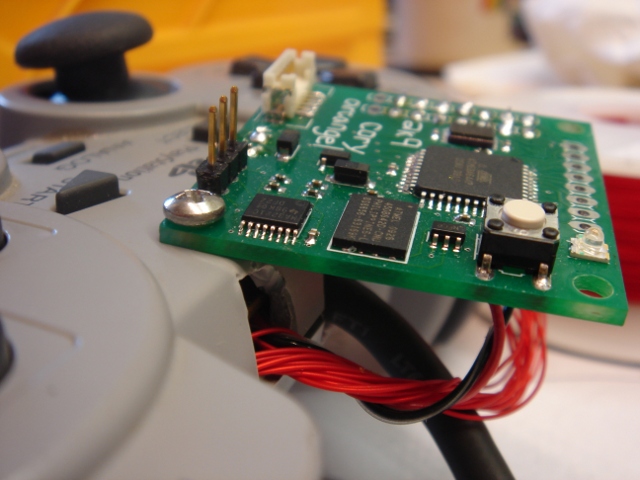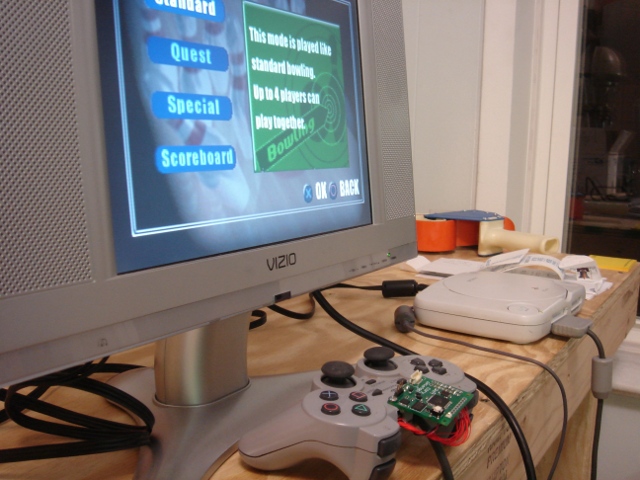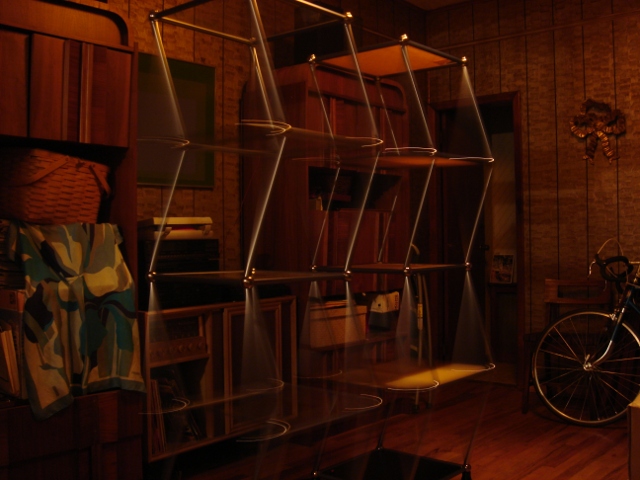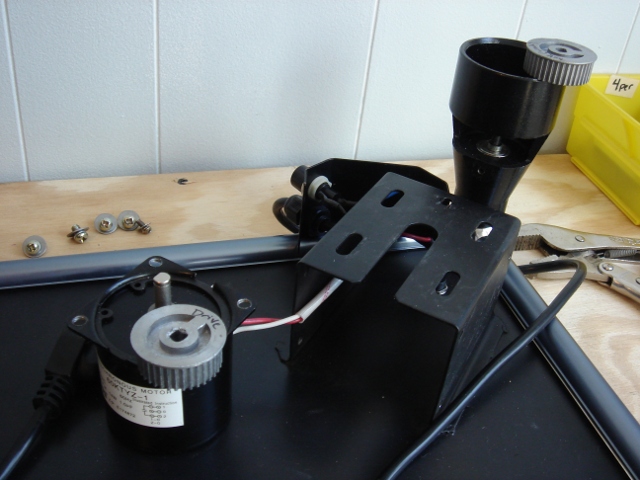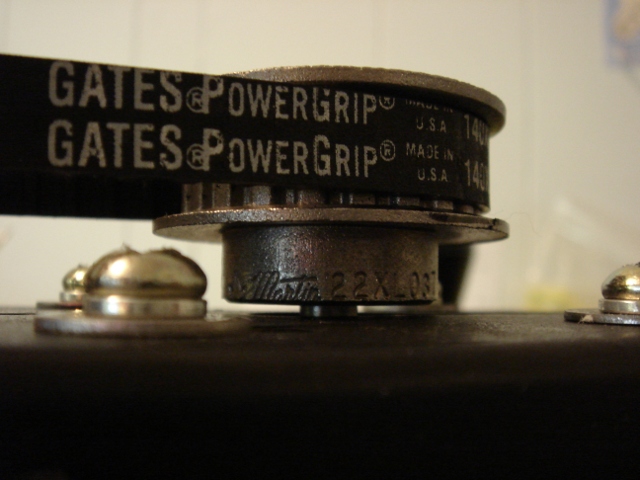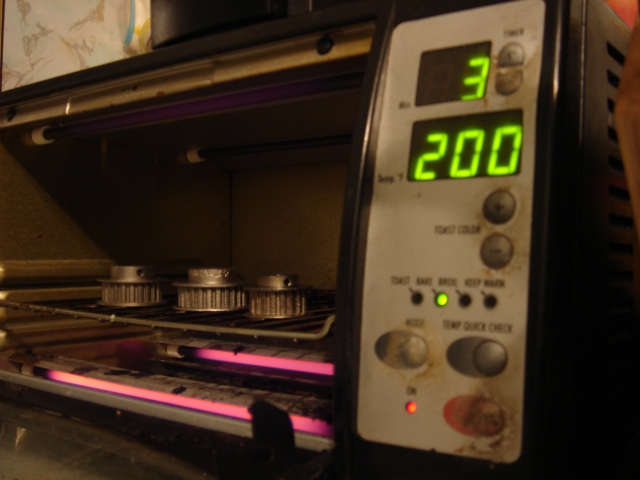Playstation PGA Golf Tweakery
Thursday, March 18th, 2010More new media art binnis for Cory.
This is basically an installation specific version of that little SBC/datalogger thingy I made. This one hangs out on a silly putting practice stand and plays back controller keypresses on a PS1 when you whack the ball.
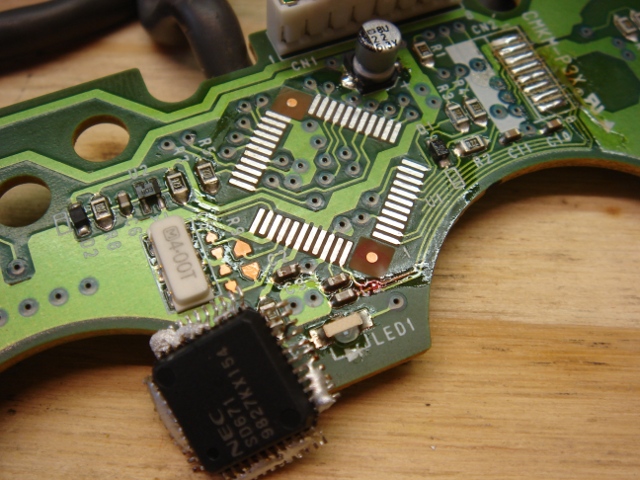
To do this, first (well, first you design a weird SBC for new media artists, but) you replace the controller’s MCU (in this case some proprietary TQFP guy) and figure out where his data lines are. I happened to already know that the PS1 basically talks SPI. Some low temp solder and a rework station was used to perform said brain surgery.
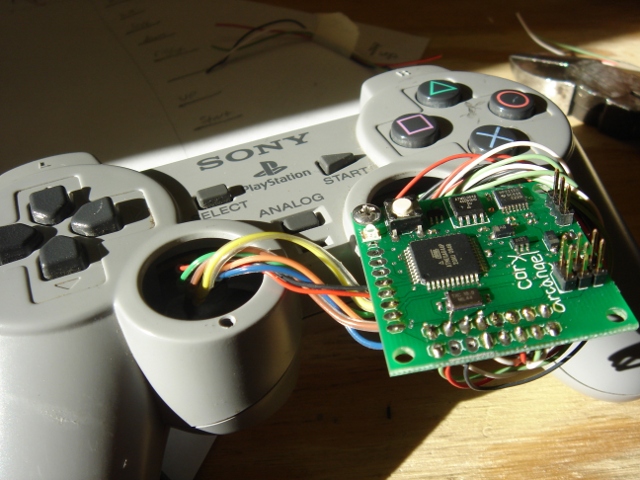
The datalines and switch lines are then brought out to my baby, where it handles communication with the PS1. You can then record the game into it, put it on your PC, and do whatever mess you need to with the data.
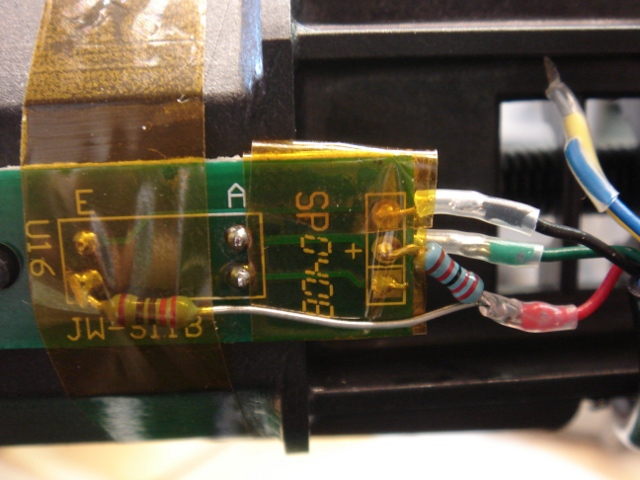
That golf tee had a set of optical photointerrupters inside it which were originally used to keep track of how hard you hit the ball and how badly you shanked it. I wired one of them to just give me a clean square wave when the ball moved appreciably, since that’s all we needed to know for our game. The code on the “TiVo” had to get changed to account for this, which was no biggie.
Eventually, these things had to get re-built cause Cory got worried that art students would have a few too many PBRs at the openings and eventually whiff and take out one of the external PCBs. I ended up ultimately shock mounting them inside the stand itself. That’s also why Cory is a good client, because he is almost certainly correct. There is a good chance that would have happened before leaving Narrat1ve labs :-)
